State-of-the-art training facilities come to China
By Sally Duckett
The dream for many trainers is to be based at a top-class state-of-the-art training centre with wonderful gallops, leading rehabilitation facilities, top-class staff accommodation as well as an ambitious site owner prepared to establish the facility as the very best of the best. For nine Hong Kong-based trainers, that dream has come true.
In August 2018, an eight-year project conceived by the Hong Kong Jockey Club (HKJC) came to fruition with the opening of its Conghua racecourse and training centre in China.
There is the slight downside for Sha Tin-based trainers, as the centre is a four-hour drive away from their main Hong Kong stables—across the border and in China. But every possible negative that it might have caused has been mitigated by the HKJC through discussion, cooperation with the Chinese authorities, big-planning, alongside the focused use of technology and ambitious ideas.
Nine trainers were invited to send horses to Conghua last autumn, and each has a string of between 15 to 20 horses based at the 150-hectare site—the trainers now termed ‘dual-site trainers’. Currently around 150 horses are in training at the €377 million facility, although by December 2018 the number of horses who had shipped to Conghua, returned to Sha Tin and travelled to China had already exceed 500 individuals.
The trainers were fully involved with the design and planning of Conghua from outset; the racecourse and gallops are in fact a replica of Sha Tin. Ensuring that the daily work and training processes are exactly the same, methods honed in Hong Kong can merely be picked up and transferred to China. There is though, at the trainers’ request, an additional 5f uphill straight gallop.
Selected trainers were invited to trial the Chinese venture and were chosen on their own abilities and that of their staff. The HKJC wanted to ensure that stable staff sent to China were capable and experienced.
The nine trainers with horses on site include leading trainers John Size, John Moore, Danny Shum, Casper Fownes and Tony Cruz.
All have been successful back in Hong Kong with their Conghua-trained horses (which are identified as such in the media for the betting public); and the Sha Tin nine are kept fully abreast of the training at Conghua courtesy of video, timing facilities and real-time technology all provided by the HKJC. The trainers, however, can spend as much time as they wish in China.
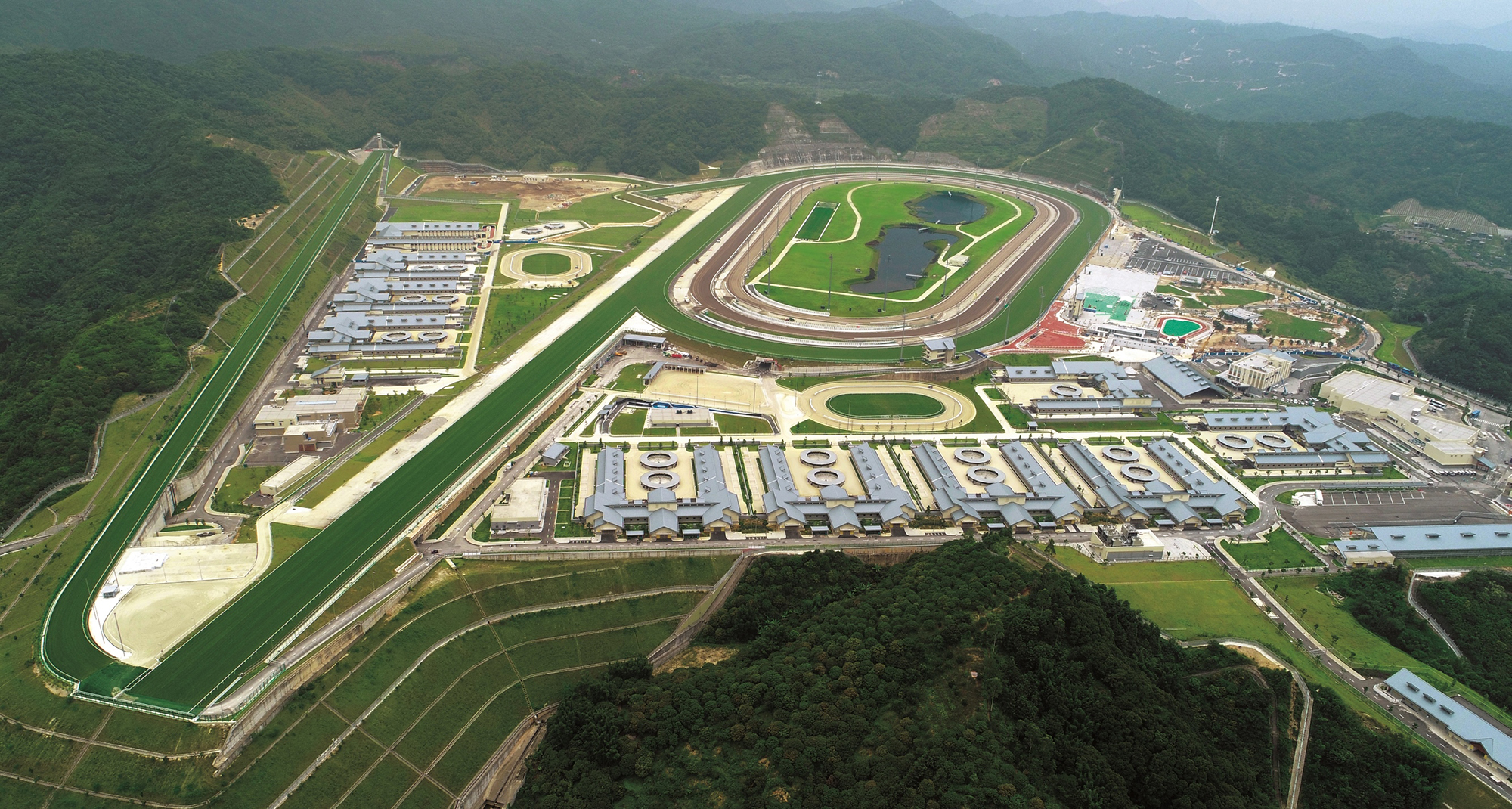
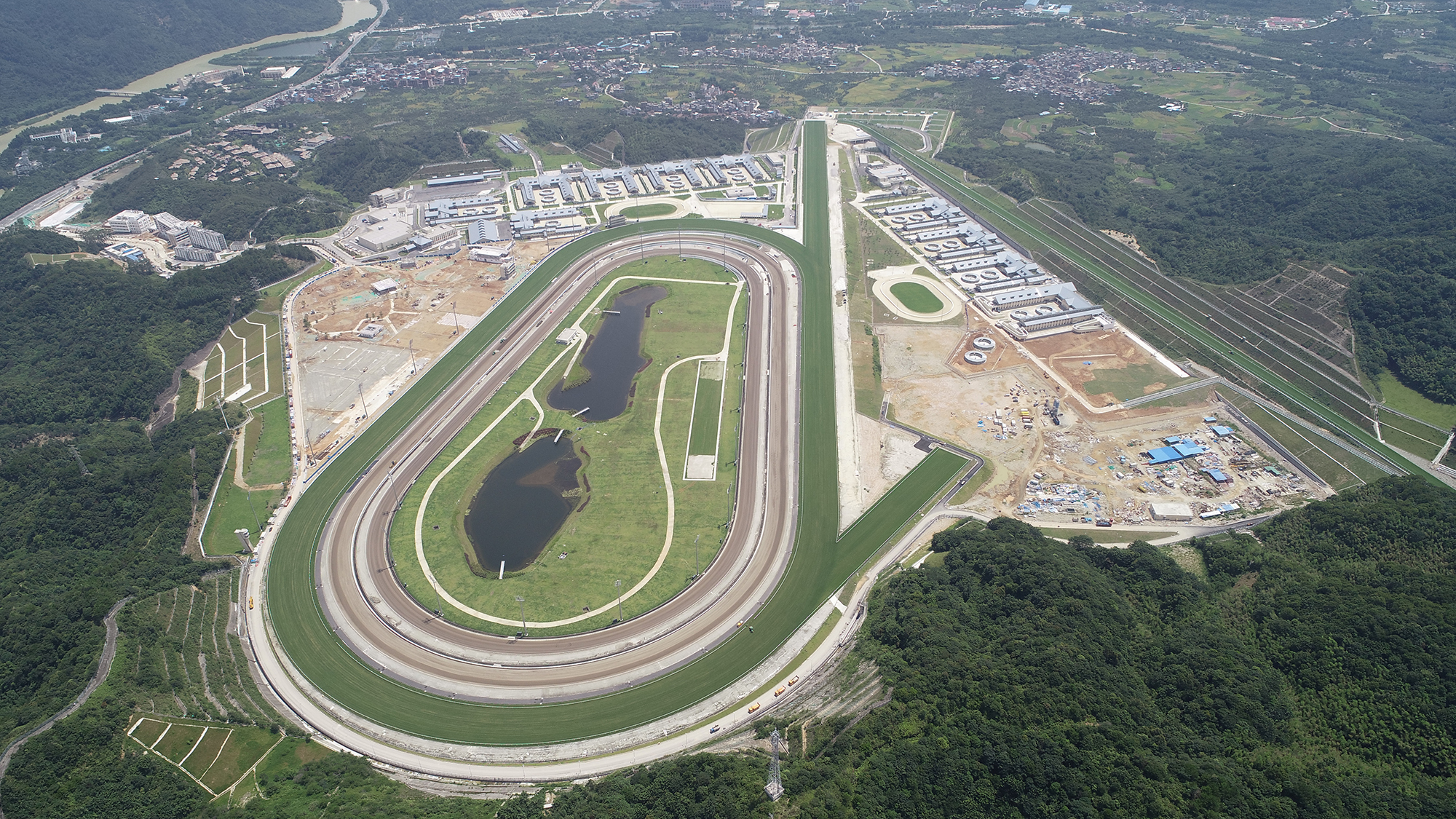
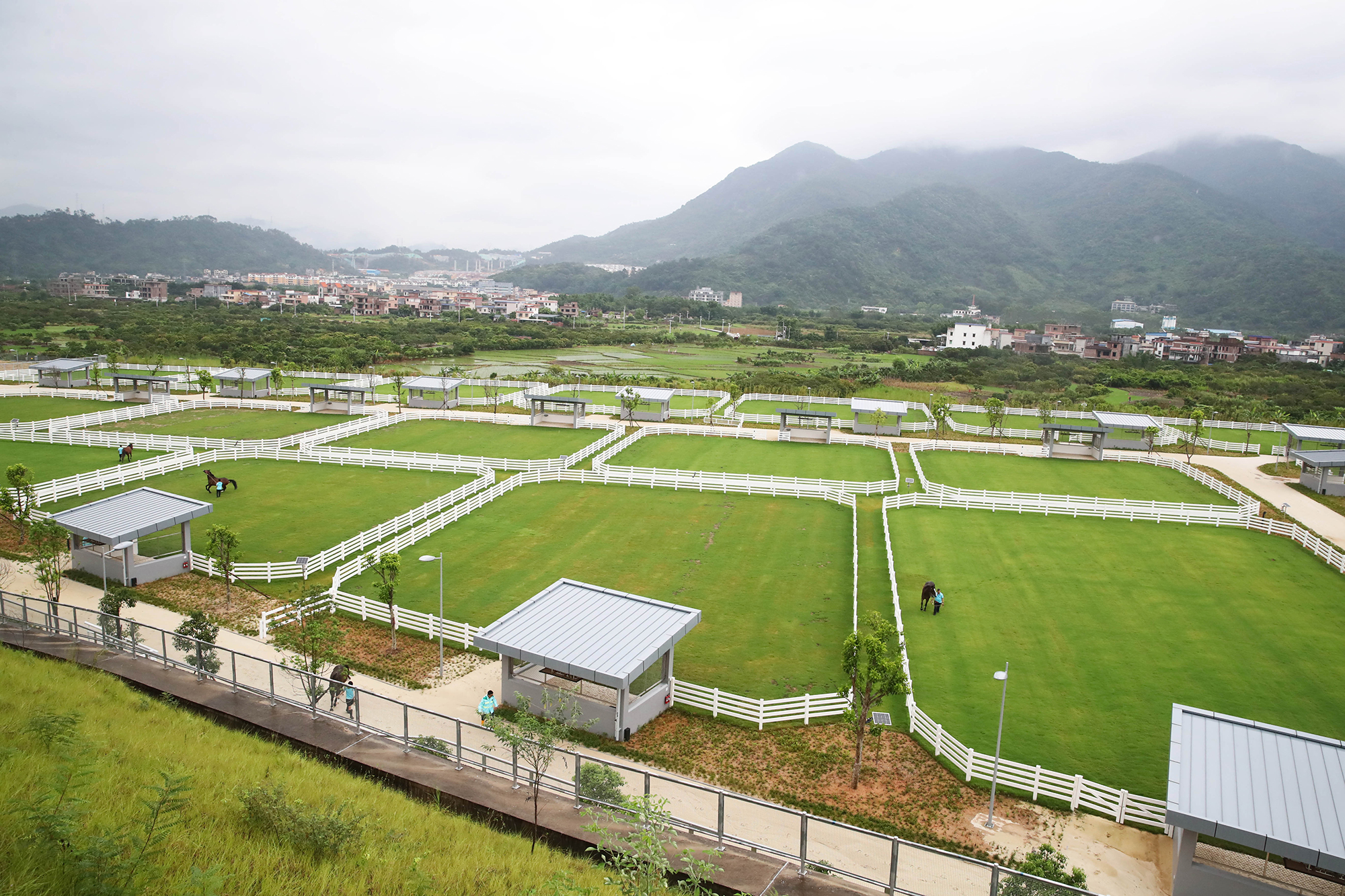
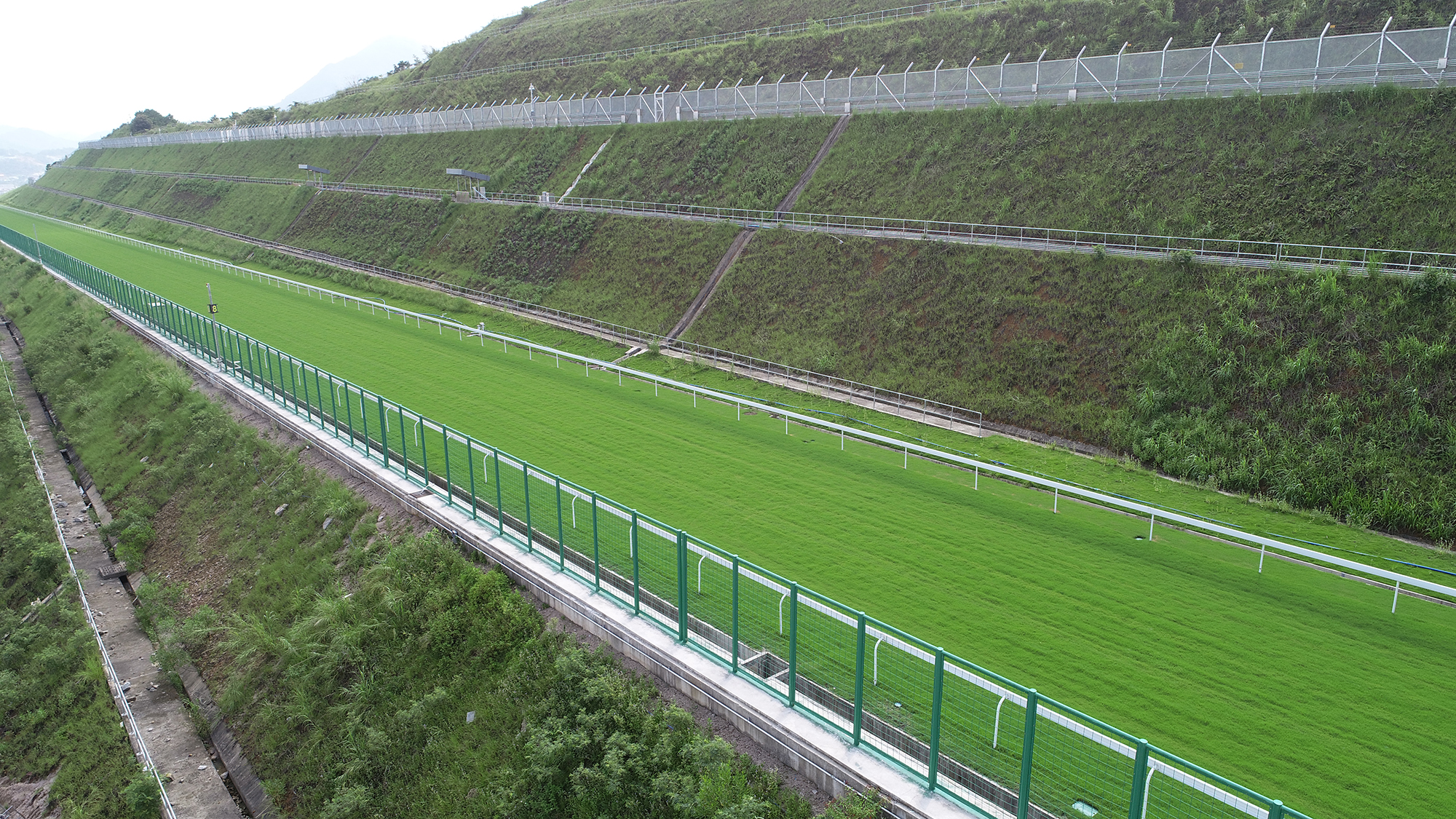
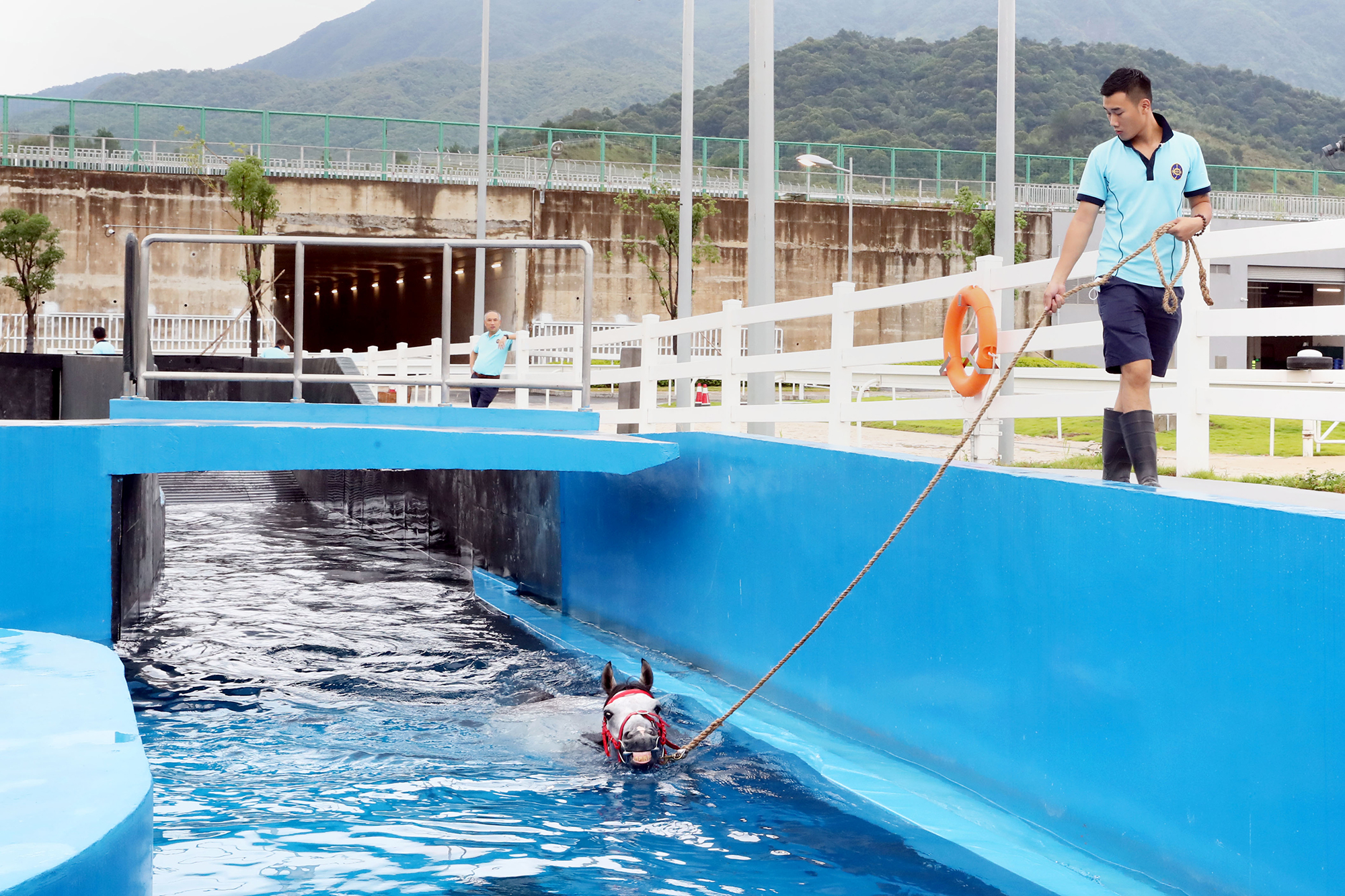
“John Size and Danny Shum in particular have spent a lot of time at Conghua”, reports Andrew Harding, the HKJC’s executive director of racing. “We have had applications from other trainers to send horses, and we will be adding another two later in the year”.
The success of the training process has kicked into gear quicker than even the ambitious HKJC team planned, and the site has already lost its initial ‘pre’ training tag.
“We had thought trainers would take horses back to Hong Kong two or three weeks ahead of a race, but they are travelling down and running just two days later—and winning”, smiles Harding. “We thought this would take perhaps a year to phase in, but it has come much quicker. The HKJC provides all the transportation, and we are already needing to ramp up the logistics—the transport initially between the two sites was twice a week, but we have extended it to six days a week (much earlier than anticipated). The travelling process had also been taking five business days to process with the levels of administration required for the border crossing, but our dual site trainers said that was too long. We have already narrowed that down to two days. Trainers can now ship on Monday in order to race on Wednesday at Happy Valley, and the horses need to undergo certain veterinary examinations ahead of racing; so they have to be in Hong Kong two days ahead of racing. They can then return to Conghua on Friday. The transport costs are all part of the HKJC’s service, and owners do not see any extra expense”.
Establishment of the Equine Disease Free Zone…
TO READ MORE —
BUY THIS ISSUE IN PRINT OR DOWNLOAD
WHY NOT SUBSCRIBE?
DON'T MISS OUT AND SUBSCRIBE TO RECEIVE THE NEXT FOUR ISSUES!
EMHF - Might technological advance lead to greater international co-operation in racing?
By Dr. Paull Khan
The Asian Racing Conference (ARC) was first staged 58 years ago and attracted less than 70 delegates. These days, it is held biennially, and the 37th ARC returned to Seoul this year – the third time it has been Korean-hosted.
The Racing
Prior to the conference, delegates had the chance to attend Korean Derby Day at Seoul Racecourse Park. Prize money for the 11-race card averaged over €100,000 per race, with the Derby itself – won by 2/1 favourite Ecton Blade, a son of imported Kentucky-bred stallion Ecton Park – worth €640,000.
The grandstands at Seoul are enormous structures, stretching far along the finishing straight and reminiscent of those at Tokyo racecourse. For many of the 80,000 racegoers who can be accommodated, there is the option of an individually numbered seat, not with any vantage point affording a view of the track, but rather deep in the bowels of one or another of five identical and cavernous floors. Each of these floors was packed this Derby Day with studious race fans, mostly deeply absorbed in their form guides, checking betting monitors, and scribbling notes, doubtless plotting betting combinations of fiendish complexity. The bias towards exotic bets is extreme in Korea, with just one percent of the handle directed at win bets.
By the time of each race, the crowds migrated to the viewing areas of the stands, looking out at the biggest big-screen in the racing world – which, despite its 150m width, is every bit as picture-crisp as one would expect from Korean technology.
Racing is an immensely popular spectator sport in the country. Annual attendances of 15 million from a population of just 50 million put European countries to shame. (For example, in Britain, where racing is the second most popular spectator sport, the 65 million population only make 6 million racecourse visits, and even on the island of Ireland, the ratio is not as impressive as in Korea: 1.3 million turnstile clicks from a population of 6.6 million). One might imagine that this results from a monopoly that racing enjoys when it comes to the gambling options available to Korean citizens. To some extent, this is true: there is but one casino in the whole of the country which Koreans may enter, and there is no domestic online betting offering. But betting – albeit to limited stakes – is allowed on a variety of other sports, a curious selection, including cycling and ssirum (Korea’s answer to sumo wrestling). And illegal online betting is widespread.
So the numbers can be seen as a great advertisement for the sport. And the crowds were fully engaged in the day’s activities: noisy and every bit as animated as one would find at Ascot or Flemington. But there is one striking feature of the scene at Seoul racecourse that sets it apart from virtually every other, outside the Middle East. It slowly dawns on one that these tens of thousands of committed racegoers are enjoying their long day’s racing…..with not an alcoholic outlet in sight! Proof that racing can thrive without an alcoholic crutch: further evidence of just how our sport, in all its diversity around the world, maintains its ability to surprise us and challenge our stereotypes.
The Conference
Those whose business is horseracing descended on Korea from Asia, Europe, and beyond. While the total of 600 or so delegates was some way short of the record numbers attracted to Hong Kong four years ago (tensions in Korea were particularly high at the time people were asked to commit to paying their USD $1,300 attendance fees, which could not have helped), to my mind, this ARC scaled new heights, in terms of the interest and relevance of the topics covered and the professionalism of the presenters.
Sweeping a bright but focussed spotlight across a broad range of issues of real moment to our sport worldwide, it illuminated such things as the frightening increase in illegal betting, the (to many) puzzling speed of growth of eSports, and the growing menace of gene doping.
The standout ‘takeaway’ from the conference for me was a talk on broadcasting technology trends by Hong Kong Jockey Club senior consultant Oonagh Chan. While this fell within a session entitled “Reaching and Expanding Racing’s Fan Base” and focussed on technology advances in areas such as picture resolution and clarity, and how 360° video might attract new followers of horseracing, I was left pondering how dramatically they might also have an impact on stewards’ rooms around the world...
TO READ MORE --
BUY THIS ISSUE IN PRINT OR DOWNLOAD -
Why not subscribe?
Don't miss out and subscribe to receive the next four issues!
The importance of identifying lower and upper limb lameness
First published in European Trainer issue 58 - July - September 2017
Click here to order this back issue!
In thoroughbred racing injuries to the limbs are a major welfare and safety concern and are the leading reason for horses to be out of training.
Lameness is the number one reason for a high turnover in racing stables and, as many trainers know, it has huge financial implications for the owner, trainer, and the racing industry in general. Previous investigators have found that just over 50% of horses in training in England and Germany experience lameness during training and approximately 20% of horses in the UK suffer lameness that prevents them from returning to training. With this amount of horses on lay-up, it can be difficult to run a profitable racing stable.
In addition to having an impact on the horse’s welfare and future career, severe musculoskeletal injury also poses a serious safety concern for jockeys. The main reason for a jockey to suffer injury in a race is a horse sustaining a catastrophic injury or sudden death. Researchers in the US found that a jockey was 171 times more likely to be injured when a horse they were riding in a race died. In thoroughbred racing, the most common life-threatening injury to horses involves fractures of bones in the fetlock. Therefore, the best way we can improve safety and welfare of both horses and jockeys is to highlight risk factors for fractures in an attempt to prevent these catastrophic injuries from occurring.



